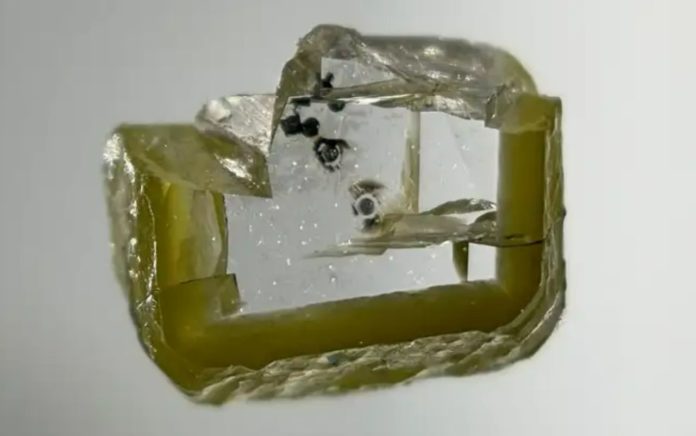Scientists have found a small crystal of a never-before-seen mineral inside a diamond from Botswana. This rock contains a unique mineral that has never been found before. It has been named as ‘davemaoite’.
Although the Earth is our home in the Universe, its interior is a world apart from the one we perceive from the surface. The existence of ‘seas’ within the rocks, for example, has long been recognized; however, it is also known that many ordinary materials can become something else when they lose specific conditions of high temperatures and pressures. Graphite and diamond, for example, are both comprised of carbon, but the latter was created under extremely high pressures in the Earth’s crust.
Many minerals that are abundant beneath the mantle but hard to locate or survive in normal settings have been theorized by scientists for decades.
When it comes to CaSiO3 (calcium silicate perovskite), researchers believe it holds the key to understanding why the Earth’s core remains so heated. For the first time ever, scientists from the University of Nevada, Las Vegas, claim to have extracted a diamond-encased sample of CaSiO3.
Daevmaoite is a mineral named after Ho-kwang (Dave) Mao, a prominent geologist who made several groundbreaking discoveries in high-pressure geochemistry and geophysics.
The findings were just published in the journal ‘Science.’
This mineral can only be found in the lower mantle, 660–2,700 kilometers below the surface, under high pressures and temperatures. Nonetheless, these particular particles had been encased in a diamond that brought the mineral back to the surface of the earth.
The study author explains, “It’s the strength of the diamond that keeps the inclusions at high pressure.”
Botswana’s Orapa mine, the world’s largest opencast diamond mine, unearthed the greenish, octahedral-shaped diamond decades ago. George Rossman, a mineralogist at the California Institute of Technology in Pasadena, purchased the diamond in 1987. The University of Nevada’s Oliver Tschauner and George R. Rossman, together with other colleagues, began examining it several years ago as part of a research project.
At the Advanced Photon Source in Lemont, Illinois, the scientists zapped the diamond with X-rays, which revealed that the inclusions were rich in a calcium mineral. It was later determined to be calcium silicate, which can take on many crystalline forms depending on the temperature and pressure at which it was formed. According to Tschauner, the diamond version has a perovskite crystal structure that can only form at temperatures and pressures found between 660 and 900 kilometers underground. Scientists have previously created high-pressure calcium silicate perovskite in the lab and thought that it should occur in the lower mantle, but they had never observed it in geological samples conclusively.
In 2018, another team of researchers found calcium silicate perovskite in a deep-Earth diamond from South Africa. But they didn’t claim a new mineral.
But called Mao and asked if he could call this mineral after him. “Of course I gladly agreed,” said Mao, who is director of the Center for High Pressure Science and Technology Advanced Research in Shanghai, China.
Last year, the International Mineralogical Association adopted the name davemaoite. It’s the second high-pressure mineral named after Mao; in 2018, Chinese scientists discovered another one called maohokite in rocks from an impact crater.
Tschauner claims that davemaoite is one of three primary minerals found in Earth’s lower mantle, accounting for 5–7% of the total. It is, however, the only one of the three to include uranium and thorium. The crystalline structure of the mineral enables for easy substitution of calcium for these elements, which produce heat through radioactive decay.
There’s a chance that other diamonds include traces of davemaoite. Because the one found at Orapa is potassium-rich, Yingwei Fei, a geochemist at the Carnegie Institution for Science in Washington, DC, suggests that one method to find more davemaoite is to hunt for deep diamonds in potassium-rich locations.
“I will definitely look for it,” said Tschauner.
You were reading: Scientists find a mysterious mineral found in Earth’s mantle inside a diamond
